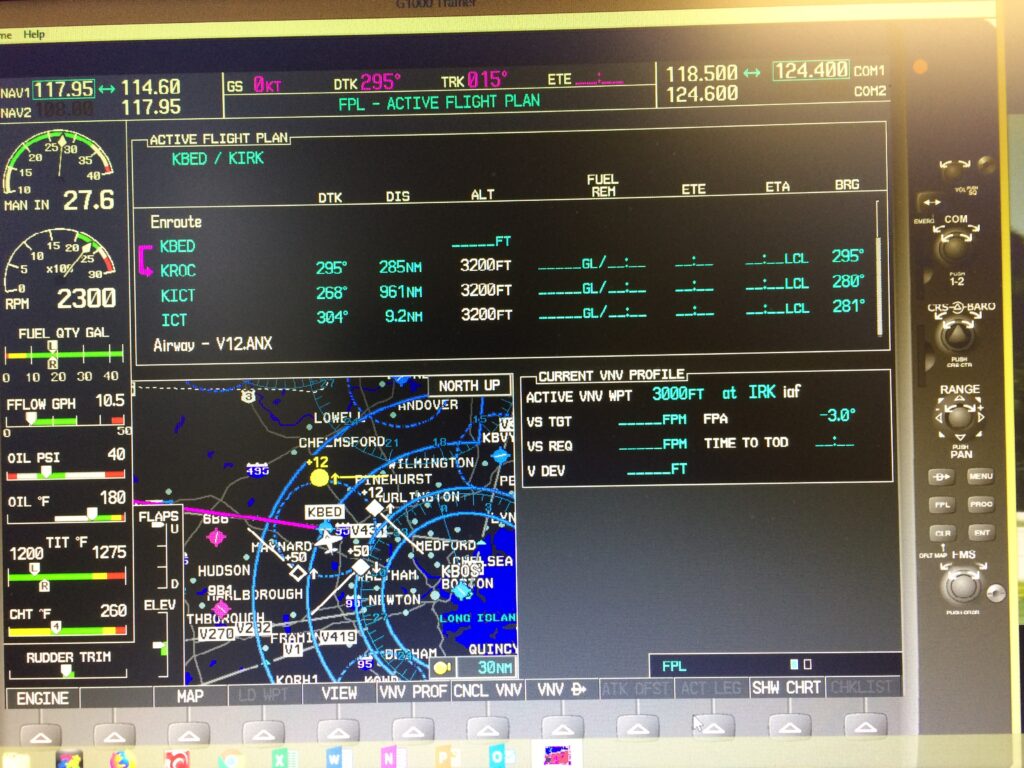Glass cockpit

When I learned to fly there was no such thing as a glass cockpit. I had to learn what each gauge was telling me, how it worked, the regulations that each had to meet and the circumstances which anyone of them would become “required equipment”. This gobbled up a lot of my study time and that’s a good thing because I needed to know how to interpret instruments and to know when they are lying to me. Wouldn’t it be nice if we had something like that attached to our smart phones? 😊
Fast forward a decade later when glass flight computers were fast becoming the new norm in aircraft big and small. They opened a whole new world of flying and flight safety.
we recall the first time I sat in an all glass cockpit. I was overwhelmed by all the graphics and all the data flowing from multiple screens. I felt like I was in actually in a spaceship. Then I learned I could change screen views to go from chapter to chapter and then page after page of information. Exploring further, I discovered several pages for maps, flight planning, navigation, waypoints, nearest, auxiliary, airports checklists and so much more.
It just made my head spin.
Learning this, I thought, made my prior instrument learning look like a walk in the park. Yes, knowing instrument functions is helpful and vital to flight, but now I was being instructed by an entirely different foreign language, glass. I was now straddling two worlds, the old world of vintage gauges and the new world of glass and graphics that would change the way I think about flying, even learning because now I could push buttons and get differing responses. The more I learned the more I understood that in all my former flying days I had been flying with my glass less than half full relative to say a G1000 or an IPAD Flight Management App.

Today,
all the resources of an all glass cockpit are now available at my fingertips. Starting with my IPAD flight planner, Garmin Pilot, I save time creating and filing my flight plan and managing logs only digitally now. Further, I can plan any flight on my IPAD, I-Phone or desktop, file it and load it to my flight computer via wi-fi.
I no longer have to call and talk to Flight Service. Also, these computers log and track flight statistics and maintenance data without me lifting a finger. Moreover, flight safety is enhanced enormously via graphical and numeric displays like flight plans, map pages, and navigation info including multiple leg altitudes.
Also, since all arrival and approach procedures are just a few button pushes away, guidance right down to the runway missed approach point is graphically displayed. Navigation is easy too. Pick either VOR, NDB or GPS or a combination. Like the old world, there are two Com and two Nav radios with “Active” and “Standby” frequencies that make flying to controlled airports a little less stressful.
Now I have much enhanced situational awareness. I no longer have to interpret vector angles to join final approach courses or wonder what my climb rates, speeds, or distance to start a decent. It’s displayed right in front of me. Flying with full glass is not only safer, but it’s also more fun! So, if all this is so good, what’s my beef? What’s missing?
In a word, it’s instruction.
It’s a paradox; on one hand, due to a growing pilot shortage nationwide there are fewer and fewer instructors available to instruct as each day passes. On the other, most of those remaining instructors were trained in the old world when steam gauges, like dinosaurs, ruled the planet. Not having an instructor on a simulator with a student is a shame because you can learn things from an instructor that you can’t learn anywhere else. Call them tricks of the trade. Have you tried to find an instructor who can take you on a deep dive in a glass cockpit? Are they ready, willing and able to teach glass flying in a way that sticks and is affordable? If so, your luck is better than mine. The vast majority of my learning has been through books, manuals, and flight simulators.
Garmin once told me to expect at least fifty hours of study time just to learn basic functions of the G-1000 series. That may be optimistic. I’ve already spent multiple of those hours learning and relearning my G-900-X and I still haven’t seen the bottom of this well. God bless Garmin International for offering simulator downloads to their customers. I just don’t know where I’d be without that. https://buy.garmin.com/en-US/US/in-the-air/general-aviation/cInTheAir-c582-p1.html
Summing it all up,
I still straddle the two worlds, the old and the new, but I’m leaning more and more on glass because my cockpit is nearly all glass. It’s the price I happily pay for entering and operating in the new glass world where flying is safer than ever! Per learning, my glass will never be fully filled. Technology and flying itself are evolving faster and faster.
When it comes to flight safety a glass full for me would be to have mandatory minimum instruction standards for all new flight training and instructor training courses because they will be flying in the new world. The rest of us have to settle for reading a pile of manuals, practicing on simulators, reading magazine articles, updating our software and accepting this worthy fate absent an instructor, as our glass half full.
https://superseawind.com/2018/11/27/turbine-flying-discovering-a-whole-new-world/

3 Responses
Steve, good observations about the world of glass we now live in. Everything is there we could possibly need , but in the airline business we try to avoid getting “buried in the box,“ looking down when we should be looking outside. That’s fantastic you are able to learn practice at home on your computer. That makes precious flight time more productive.
i want to buy a seawind 300c.
have one for sale ?
Jose; it’s simple; review this website and make an offer. I’ll respond.